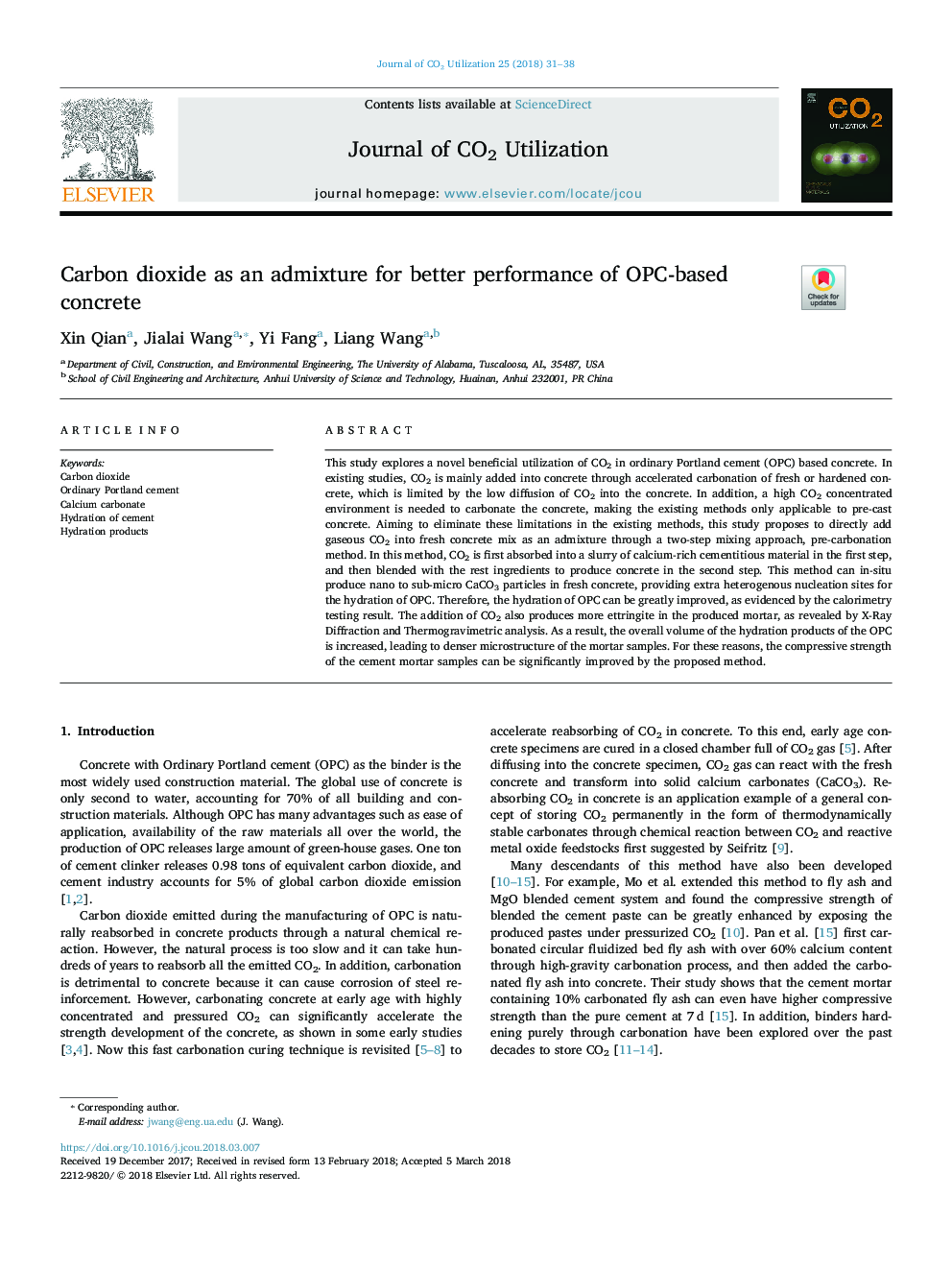| Article ID | Journal | Published Year | Pages | File Type |
|---|---|---|---|---|
| 6528575 | Journal of CO2 Utilization | 2018 | 8 Pages |
Abstract
This study explores a novel beneficial utilization of CO2 in ordinary Portland cement (OPC) based concrete. In existing studies, CO2 is mainly added into concrete through accelerated carbonation of fresh or hardened concrete, which is limited by the low diffusion of CO2 into the concrete. In addition, a high CO2 concentrated environment is needed to carbonate the concrete, making the existing methods only applicable to pre-cast concrete. Aiming to eliminate these limitations in the existing methods, this study proposes to directly add gaseous CO2 into fresh concrete mix as an admixture through a two-step mixing approach, pre-carbonation method. In this method, CO2 is first absorbed into a slurry of calcium-rich cementitious material in the first step, and then blended with the rest ingredients to produce concrete in the second step. This method can in-situ produce nano to sub-micro CaCO3 particles in fresh concrete, providing extra heterogenous nucleation sites for the hydration of OPC. Therefore, the hydration of OPC can be greatly improved, as evidenced by the calorimetry testing result. The addition of CO2 also produces more ettringite in the produced mortar, as revealed by X-Ray Diffraction and Thermogravimetric analysis. As a result, the overall volume of the hydration products of the OPC is increased, leading to denser microstructure of the mortar samples. For these reasons, the compressive strength of the cement mortar samples can be significantly improved by the proposed method.
Related Topics
Physical Sciences and Engineering
Chemical Engineering
Catalysis
Authors
Xin Qian, Jialai Wang, Yi Fang, Liang Wang,
